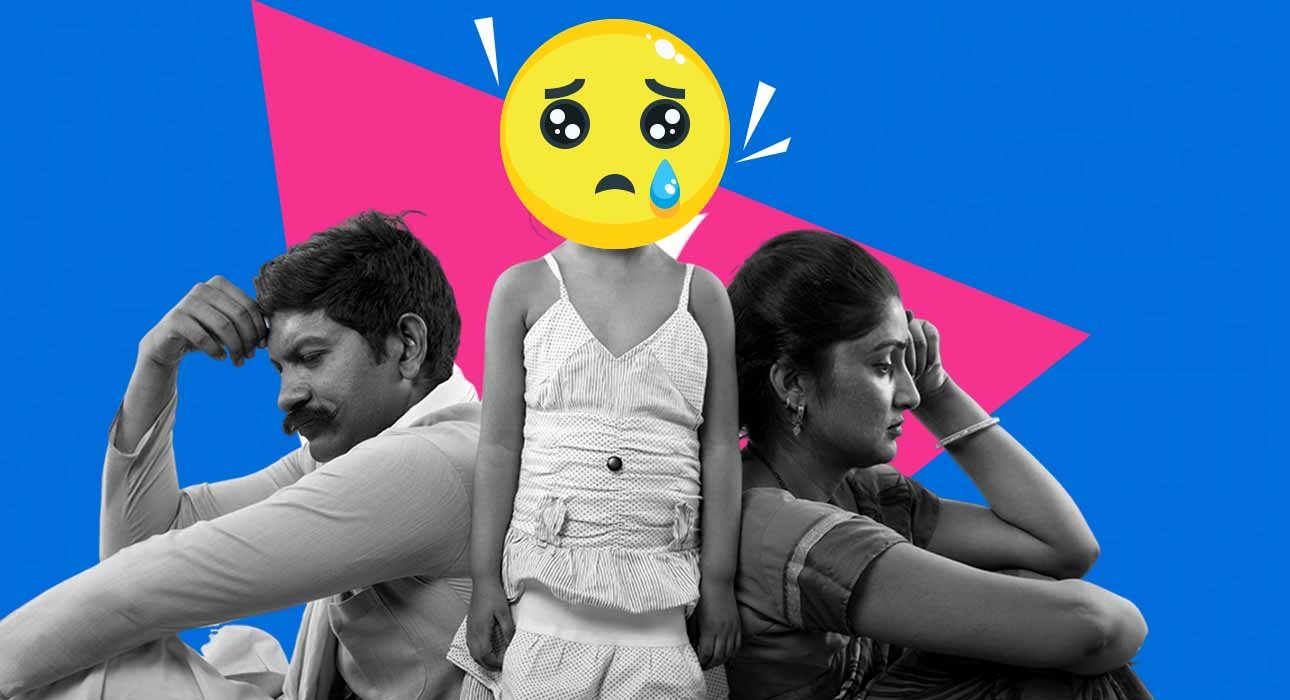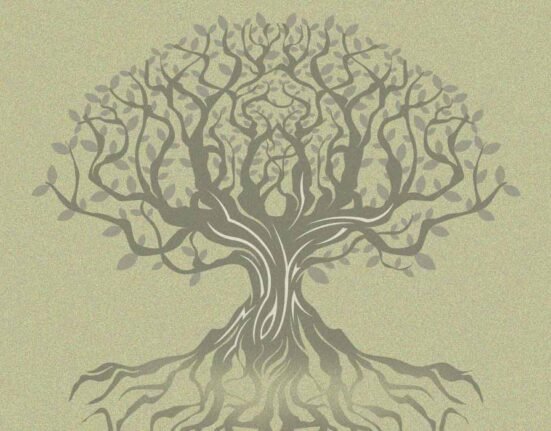Most people think of home as an emotional haven, but many individuals experience home as a source of distress. One potential reason for this tension is emotional triangulation, which is, in a broad way, a relationship phase, where one third person is engaged with the disturbance or conflict between two people to decrease the anxiety in the first two relationships or to equilibrate the relational balance (Bowen, 1978).
Triangulation is characteristic of families experiencing chronic stress, marital conflict, or poorly defined relational boundaries. While emotional triangulation may decrease the emotional tension temporarily between the two individuals, often the stress and tension result in transferring the conflict to the third person, thereby overloading the third relationship and creating unnecessary stress in all relationships involved (Kerr & Bowen, 1988). Understanding this concept gives us some insight into the ways family systems distribute stress and how people internalise relational instability.
Read More: How to deal with a Conflict?
Understanding Emotional Triangulation
Emotional triangulation comes from family systems theory, which frames the family as an emotional unit where each family member’s behaviours affect the others (Bowen, 1978). When two people, mostly parents, are in some form of conflict that they are unable to resolve, they involuntarily involve a third person (i.e., child, family member, or even a friend) to manage the stress. For theory, this person becomes the third person in the triangle. While this third person provides some relief from the stress, it creates a long-term instability in the family system (Titelman, 2014).
For example, one parent may share with a child some issues they are having in his or her marital relationship, making the child an emotional partner or mediator. When this boundary is blurred over time, that relationship creates confusion, feelings of guilt, and too much responsibility for the child to fix or settle the parents’ marital issues (Kerr & Bowen, 1988). As a result, triangulation creates a multigenerational emotional process that results in interpersonal denial of each person.
Psychological Impact on Children
Children in the middle of a triangulation experience significant emotional damage. Studies indicate that children become more anxious, guilty, and blame themselves when they become involved in frequent parental conflict (Buehler et al., 1997). They believe that they are responsible for mediating or bringing about peace between their parents. These children may “reverse” their role and become emotionally mature prematurely.
Long-term exposure to parental hostility triggers a stress response in the body, raised cortisol levels, and a lack of ability to regulate emotion (Repetti et al., 2002). Additionally, children in triangulation may develop patterns of people-pleasing, hypervigilance, or emotional suppression to manage their experience (Minuchin, 1974). Survival patterns can work in the moment but are predictive of depression, insecurity in relationships, and reliance on low self-esteem in the long term (Buehler et al., 1997).
Read More: From People-Pleasing to Authentic Self: How Therapy Transforms Our Social Lives
Triangulation Among Adults
Triangulation persists well into adulthood; it simply takes a new form. In marriages, we have seen one partner seek comfort from a friend or family member instead of addressing the conflict directly, resulting in triangulated secondary alliances that upset the relationship and create resentment and misunderstanding (Nichols, 2013). In the same way, adult children may continue to “triangulate” with their parents, caught in a conflict of loyalty and separate identity. These adults will also likely experience chronic emotional stress, difficulty defining their personal boundaries of adjacency, and a tendency to recreate triangulated systems in their own families (Bowen, 1978).
These individuals may also find themselves mediating disputes at work or among friends, often without conscious realisation, simply reenacting the role of mediator that they learned in their own family (Titelman, 2014). Internalising triangulation creates ongoing cycles of indirect communication and emotional distress.
Physiological Stress and Emotional Exhaustion
The psychological strain of triangulation has an immediate expression in physiological stress. The ongoing emotional pressure activates the hypothalamic–pituitary–adrenal (HPA) axis, and the body floods with stress hormones such as cortisol and adrenaline (Repetti et al., 2002). Over an extended period of time, this results in fatigue, sleep disturbance, and diminished immune function.
Research links exposure to family conflict and tension with increased risk for cardiovascular problems and anxiety disorders throughout life (Evans & Kim, 2007). Members of triangulated families often show similar signs of emotional exhaustion as in occupational burnout, including irritability, depersonalization, and a sense of hopelessness (Maslach & Leiter, 2016). Triangulation is thus not only a relational issue but a health issue that affects both one’s body and mind.
Intergenerational Transmission of Stress
Triangulation is likely to persist through generations. A parent who grew up in a highly conflicted family may unconsciously repeat the same behaviours in their own home (Bowen, 1978). For example, a mother who was formerly triangulated between her parents may come to rely on her own child emotionally for stability in the family during conflicts with her partner. She is passing on her unsettled anxiety. This Intergenerational transmission reflects the legacy of emotional dysfunction in a family system unless it is interrupted (Titelman, 2014).
Over time, the family has established an emotional structure where avoidance of emotion or building alliances replaces or avoids problem-solving with honesty and directness. Interruption of these intergenerational processes requires awareness, therapy, and the process of self-differentiation, the ability to stay emotionally connected and manageable while achieving meaningful independence from the other partner (Kerr & Bowen, 1988).
Therapeutic Approaches to Resolving Triangulation
Interventions that work are predicated on recognising the systemic nature of the issue. Family therapy, especially Bowenian and structural therapies, helps clients see the patterns of triangulation and re-establish clear emotional boundaries (Minuchin, 1974; Nichols, 2013). The therapist invites families to talk directly with each other again, instead of the viewer or by proxy, where the feelings can be expressed directly. Being more self-differentiated is an example of being able to tolerate anxiety while not pulling others into the problem (Kerr & Bowen, 1988).
The use of mindfulness or emotion regulation strategies can lower physiological arousal and help clients stay open and tolerate discomfort without utilising indirect and avoidant strategies (Siegel, 2012). To heal from triangulation, we need an emotional understanding and to act differently. We need to be able to stand steady in the midst of the relational force-field.
Coping and Emotional Resilience
While triangulation can create long-term injury, it is possible to engage in intentional self-work and create boundaries to support healing. In developing emotional resilience, one begins by identifying challenges based on inherited familial behavioural patterns, and then consciously chooses new methods of relating (Siegel, 2012). Developing support networks outside of the family, engaging in self-compassion, or participating in therapy can all allow individuals to reconstruct safety into their experience and self-worth into their self-identity.
Fredrickson (2001) has discussed how developing some positive emotions, like gratitude and connection, creates “broad-and-build” psychological resources, which act against chronic stress experiences. Once people learn to manage their own anxiety and eventually stop displacing their anxiety onto others, the family system can gradually stabilise, and triangulation diminishes over time and experience.
Conclusion
Emotional triangulation turns family discord into an ongoing source of psychological and physiological stress. While equally impactful and unintentional, these dynamics create conditions where anxiety moves through indirect communication. Triangulations create emotional burdens both within children and adults, and importantly, the fact that there is an emotional burden is a pattern that can be found universally across families and families, thus demonstrating its systematic features (Bowen, 1978). Addressing these cycles requires a recognition of the issue, emotional differentiation, and direct communication.
To heal offspring from emotional triangulating stress does not mean merely resolving a conflict; it means restoring autonomy, authenticity, and peace to relationships that had previously thrived on conflict. For families to mutually address issues face-to-face, the home can return as a site of authentic connection, rather than an emotional battlefield.
FAQs
What is emotional triangulation?
Emotional triangulation is a relationship dynamic where a third person is drawn into a conflict between two others to manage their stress and anxiety, often creating more problems than it solves.
How does emotional triangulation affect children?
Children caught in emotional triangulation may experience anxiety, guilt, and self-blame, and may develop patterns of people-pleasing, hypervigilance, or emotional suppression.
Can emotional triangulation persist into adulthood?
Yes, emotional triangulation can persist into adulthood, taking new forms such as triangulated alliances in marriages or conflicts between adult children and their parents.
What are the physiological effects of emotional triangulation?
Emotional triangulation can lead to increased stress hormones like cortisol and adrenaline, fatigue, sleep disturbance, and diminished immune function, increasing the risk of cardiovascular problems and anxiety disorders.
References +
Bowen, M. (1978). Family therapy in clinical practice. Jason Aronson.
Buehler, C., Anthony, C., Krishnakumar, A., Stone, G., Gerard, J., & Pemberton, S. (1997). Interparental conflict and youth problem behaviours: A meta-analysis. Journal of Child and Family Studies, 6(2), 233–247.
Evans, G. W., & Kim, P. (2007). Childhood poverty and health: Cumulative risk exposure and stress dysregulation. Psychological Science, 18(11), 953–957.
Fredrickson, B. L. (2001). The role of positive emotions in positive psychology: The broaden-and-build theory of positive emotions. American Psychologist, 56(3), 218–226.
Kerr, M. E., & Bowen, M. (1988). Family evaluation: An approach based on Bowen theory. Norton.
Maslach, C., & Leiter, M. P. (2016). Burnout: A multidimensional perspective. Psychology Press.
Minuchin, S. (1974). Families and family therapy. Harvard University Press. Nichols, M. P. (2013). Family therapy: Concepts and methods (10th ed.). Pearson.
Repetti, R. L., Taylor, S. E., & Seeman, T. E. (2002). Risky families: Family social environments and the mental and physical health of offspring. Psychological Bulletin, 128(2), 330–366.
Siegel, D. J. (2012). The developing mind: How relationships and the brain interact to shape who we are (2nd ed.). Guilford Press.
Titelman, P. (2014). Triangles: Bowen family systems theory perspectives. Routledge.













Leave feedback about this